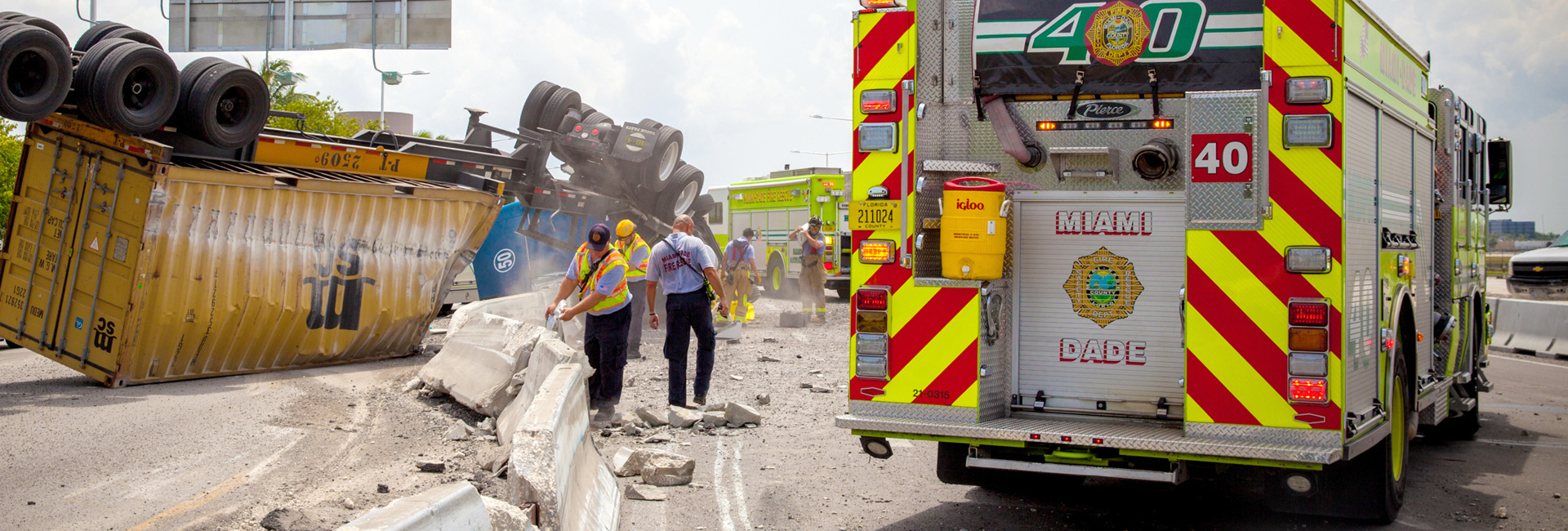During a typical year in the U.S., heat waves kill more people than all other natural disasters combined. But heat-related illness usually progresses in stages, so if you are aware of the signs and symptoms of each stage, you should be able to prevent the development of a life-threatening situation.
The first stage is heat cramps, which are painful muscle spasms usually in the abdominal area, the legs or specific muscle groups being used during activity. The body overheats and the loss of water and salt from heavy sweating causes the cramps.
Heat cramps should be taken as a warning. Move indoors or to a shaded area and drink plenty of cool fluids. Gently stretch and massage the affected muscles. If steps aren’t taken to cool down and hydrate, the body will soon move into the next stage of heat-related illness.
The second stage of heat illness is called heat exhaustion. It is not always preceded by heat cramps, but almost always occurs during heavy activity in extremely hot and humid conditions. Profuse sweating causes further dehydration, but the sweat does not evaporate from the skin as it should (usually due to high humidity) and the body loses the ability to cool itself.
Signs and symptoms of heat exhaustion include:- Heavy sweating or sometimes just moist, pale or red skin
- A headache, dizziness, lightheadedness
- Extreme thirst
- Nausea
Act immediately. If ignored, heat exhaustion can advance quickly into a life-threatening situation. Move indoors or to a shaded area. Drink plenty of cool water or a sports drink with electrolytes. Apply a wet cloth to the skin or spray with cool (not cold) water from a spray bottle or even a garden hose. If feeling faint or dizzy, lie back and elevate legs 6 to 8 inches.
Heat exhaustion can easily progress to the most serious heat-related illness, heatstroke. Heatstroke is a severe, life-threatening emergency. It is a complete breakdown of the body’s temperature control system. Sweating ceases, body temperature rises and vital organs begin to shut down. If immediate action is not taken, heatstroke will lead to shock, coma, brain damage and even death.
Signs and symptoms of heatstroke include:- A severe headache
- Rapid, weak heartbeat
- Rapid, shallow breathing
- High body temperature (sometimes as high as 105°F)
- Cessation of sweating and dry, red, hot skin
- Confusion, fainting or complete loss of consciousness
- Seizures
Any person showing signs and symptoms of heatstroke should immediately be moved indoors or to a cool, shady place. Call 911 right away and begin to lower the body temperature by covering with wet sheets or spraying with cool water. Wrap ice or cold packs in a cloth and place in the armpits, neck and groin area. If alert enough, give cool fluids to drink.
Of course, the best treatment of all for heat-related illness is prevention. Here are some safety tips which can help in preventing this problem. Avoid vigorous outdoor activity between the hours of 10 a.m. and 6 p.m.
Make sure to drink fluids throughout the day instead of waiting until you’re thirsty, and avoid beverages containing caffeine or alcohol.
Wear light-colored, loose clothing
Instruct children to do the same. Make sure they know how to recognize when they are too hot, even if they’re not with you. Teach them that in these cases, they must go indoors right away and drink water.
Elderly persons and young children are at a higher risk for heat-related illness, as well as people taking certain medications such as diuretics. Extra care is required to prevent an emergency.Sunburn is an injury to the skin produced by overexposure to ultraviolet (UV) radiation. Sunburn results when the amount of exposure to the sun or other UV light source exceeds the ability of the body's protective pigment, melanin, to protect the skin. Sunburn in a very light-skinned person may occur in less than 15 minutes of midday sun exposure, while a dark-skinned person may tolerate the same exposure for several hours.
UV radiation is divided into two main types, UVA, and UVB. Ozone in the Earth's atmosphere filters out a portion of this before it reaches the planet's surface, but not enough to prevent damage to humans. Short-term damage can range from minor to severe, but long-term effects, such as skin cancer, can be deadly.
Two types of skin cancer, basal cell, and squamous cell, usually are treatable if detected early. Basal cell often develops on the face, ears, lips and around the mouth of fair-skinned people. Squamous cell usually appears as a scaly patch or raised wart-like growth.
Melanoma, another type of skin cancer, is the most dangerous. One blistering sunburn doubles the likelihood of developing malignant melanoma. It can occur anywhere on the body and can be deadly if not treated. Early detection is crucial. Factors associated with increased risk of developing skin cancer include:- Several blistering sunburns as a child or teenager
- A family history of skin cancer
- Light-colored skin, hair, and eyes
- Moles that are irregular in shape or color.
Sunburns are often not immediately obvious. After being burned, the skin may not turn red until 2 to 6 hours later, with the worst pain occurring between 6 to 48 hours afterward. The burn continues to develop for 24 to 72 hours after exposure and skin peeling can begin 3 to 8 days after the burn onset.
Sunburns are an actual burn, just like thermal burns, and are classified as either first or second degree burns in the same way. They can be just as serious, and even more so because they often cover a larger percentage of the body. Extreme sunburns can be painful to the point of debilitation and may require hospitalization.
The risk of sunburn increases with proximity to the earth's equator. It can also be increased by pharmaceutical products that sensitize the skin to UV radiation. Certain antibiotics, contraceptives, and tranquilizers have this effect.
It is now widely recognized that sunburn and sun exposure should not be treated as insignificant. Deaths have resulted from acute sun exposure, and significant temporary disability is experienced by millions of sunburned people each year. Extreme and prolonged sun damage is also thought to contribute to the development of cataracts.
The immediate effects of harmful sun rays - sunburn, rashes, cell and tissue damage - are bad enough. But medical experts believe that too much exposure to the sun in childhood or adolescence is a major cause of skin cancer and premature skin aging later in life. Health experts also believe that UVA may weaken the immune system.
Sunburn is always better prevented than treated. Your best bet is to avoid outdoor activities when the sun is strongest, between 10 a.m. and 3 p.m., and stay in the shade as much as possible whenever outdoors during the day.
Apply sunscreen at least 30 minutes before going out into the sun. Most doctors recommend a broad-spectrum sunscreen with an SPF level of 30 or greater. It should be generously applied and reapplied if out in the sun for a prolonged period of time. Wearing a hat, sunglasses and other protective clothing is also recommended.
If you do get a sunburn, try taking a cool shower or bath, or placing wet, cold cloths on the burn. Avoid products that contain benzocaine, lidocaine, or petroleum. If blisters are present, dry bandages may help prevent infection.
If your skin is not blistering, aloe vera or burn-relief cream may be applied to relieve discomfort. Anti-inflammatory medications, like aspirin or ibuprofen may also help lessen pain and swelling from sunburn.
Talk with camp counselors and other child caregivers about staying out of the sun between 10 a.m. and 3 p.m., and make sure they apply sunscreen and then reapply after children play hard, perspire or swim.
Keep babies younger than six months completely out of midday sun. Sunscreens may irritate baby skin, and an infant's developing eyes are especially vulnerable to sunlight.

Fire Rescue
Raied "Ray" Jadallah
R. David Paulison Fire Rescue Headquarters
9300 NW 41st Street,
Miami, FL 33178-2414
786-331-5000

